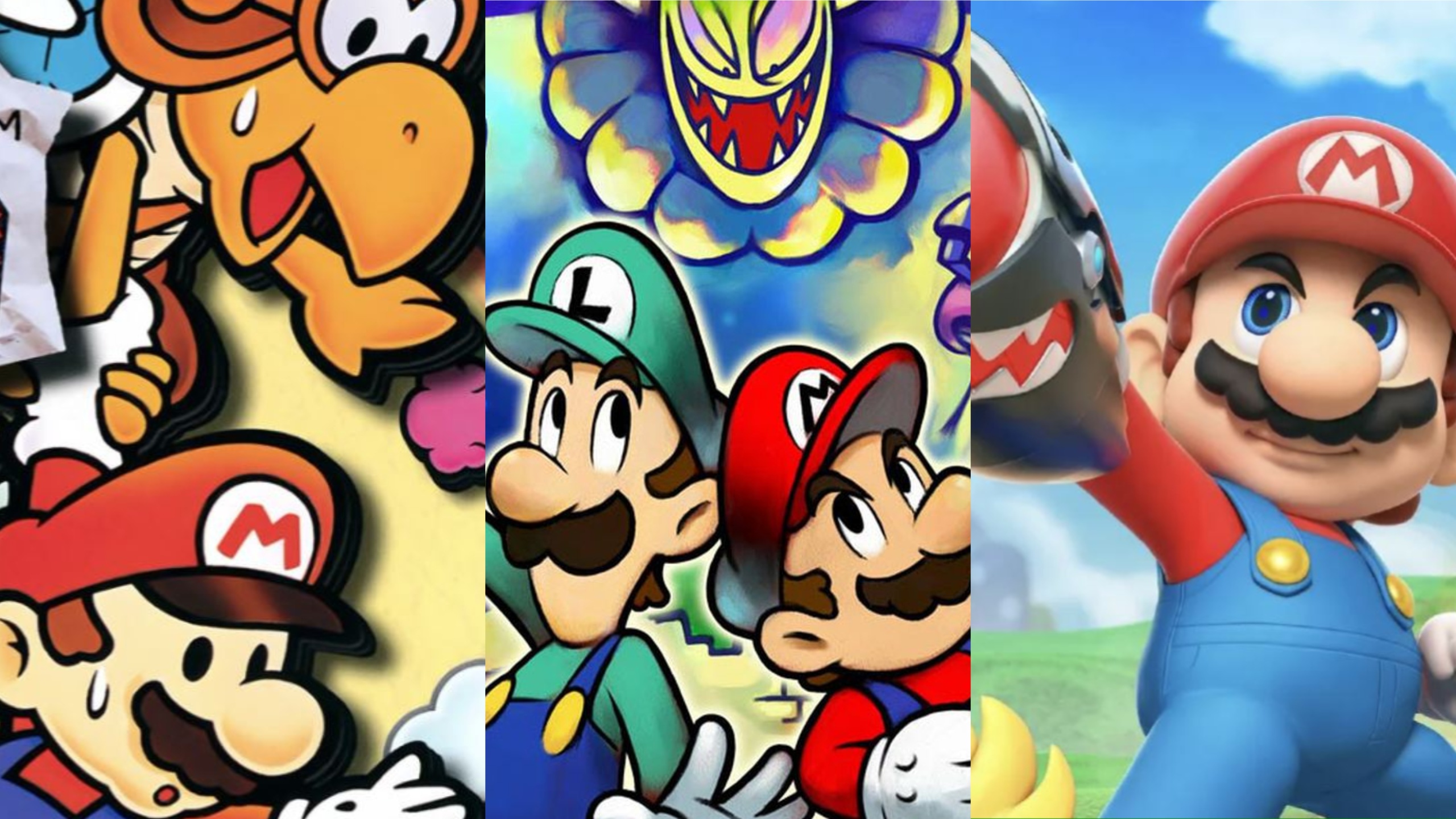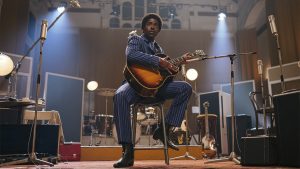
It’s sometimes hard to think of the Super Mario RPG games as even a spiritual franchise. It’s often easier to think of them as some kind of gimmick that is occasionally revisited once in a while. Yet, between the various series that belong to that spiritual franchise, there have been a surprising number of games released over the years that you could describe as a Super Mario RPG. Many of them are better than they sometimes get credit for, and each of them often offers something unique that sets them apart from the pack. That makes the process of ranking them surprisingly difficult.
Before we dive into that, though, here are a few points to keep in mind:
– Remakes and remasters are not included in these rankings. Where remakes and remasters are available, a “best possible version” rule was utilized.
– Camelot’s Mario sports titles with RPG elements are not generally considered part of the Mario RPG canon and are therefore not included on this list. However, they are generally incredible games.
– The Mario + Rabbids franchise is included in these rankings as it is widely recognized as part of this canon and offers enough RPG elements to fall under the strategy RPG umbrella.
With that out of the way, here are the best (and worst) Super Mario RPGs:
14. Paper Mario: Sticker Star
Sticker Star makes several changes to the Paper Mario franchise that are largely designed to de-emphasize that series’ more traditional role-playing elements. The game focuses much more on combat and exploration than plot, and a sticker collection system essentially replaces more traditional RPG leveling mechanics.
And that is why Sticker Star earns the bottom spot on this list largely by default. Sticker Star is a solid little action platformer that looks great and feels good on a handheld device. However, it doesn’t feel like much of a Paper Mario game or, for that matter, an RPG. Maybe you could argue for its entertainment value compared to the other games at the bottom of this list. Ultimately, it just doesn’t do much to advance this franchise or honor its best qualities.
13. Paper Mario: Color Splash
The most generous ways to describe Color Splash typically revolve around the word “potential.” The game looks fantastic, its writing is generally quite good, and the game tries to use the Wii U’s touchpad in interesting ways that feel true to the game’s aesthetic.
Unfortunately, the game commits a cardinal sin for any Super Mario RPG: it’s not very fun to play. The game features way too many combat sequences, and the new mechanics designed to liven those sequences often make them feel even more tedious. To make matters worse, the game often de-emphasizes the series’ historical role-playing elements to focus more on item collection and the aforementioned combat. There’s just not much here you won’t find done better (or at all) in other games.
12. Paper Mario: The Origami King
Here’s where things start to get tricky.
Like some of the other games at the bottom of this list, Origami King makes several changes to the Paper Mario franchise that were clearly implemented with the best intentions. Its origami-inspired art style is stunning, the game tries to be more of an RPG than its immediate predecessors, and there are genuine incentives to explore its world that include (but are not limited to) helpful rewards tied into the discovery of hidden objects.
However, you can count me among those who cannot find many nice things to say about this game’s combat system. I love the idea of arranging enemies around a grid to trigger puzzle-like combat bonuses. Unfortunately, the act of doing so soon proves to be needlessly tedious. Even worse, the continued absence of a proper XP system means that rewards for participating in these battles are minimal. There are too few ways to spice up the variety of the combat beyond what little deviations the game offers.
11. Mario & Luigi: Paper Jam
Learning to love (or maybe just like) Paper Jam means making peace with the burdens of its crossover status. Yes, after years of requests, Paper Jam finally delivered the Mario & Luigi and Paper Mario crossover fans had been waiting for. Unfortunately, someone decided to emphasize the one element both series had sometimes struggled with: environmental exploration. Sadly, the emphasis on that particular element of the experience came at the cost of the otherwise clever qualities both franchises were historically known for.
Remove yourself from those expectations, though, and you’ll find a lot to like about Paper Jam. Its combat thankfully veers more towards the Mario & Luigi side of things, while the game regularly offers some truly incredible setpiece moments. Other elements (like the large collection of minigames) torpedo the game’s storytelling but are otherwise enjoyable when examined on their own merits.
10. Mario + Rabbids: Kingdom Battle
Truth be told, Kingdom Battle’s relatively low placement on this list is largely due to the quality of its sequel. Whereas many of the games that follow still offer a little something of their own, this game’s sequel does make it slightly harder to view the original in quite the same light.
Even still, this is a truly incredible experience. We all had a good laugh at the idea of what was essentially a Mario-themed XCOM game. Yet, Ubisoft managed to make that seemingly ridiculous concept simply work. What you lose in XCOM depth you more than make up for with the charms of the Super Mario and Rabbids franchise as well as a few ideas (such as platforming elements and unique character abilities) that add a lot to the core strategy gameplay. Besides, if we’re all being honest, there are times when you want to enjoy XCOM without having to deal with…well, XCOM.
9. Mario & Luigi: Dream Team
Released as part of the fabled Year of Luigi, Dream Team is built around the idea of occasionally entering Luigi’s dreams and seeing things from the perspective of his subconscious. That premise not only lends itself well to the series’ trademark comedy but opens up new gameplay possibilities that largely revolve around toying with a sleeping Luigi to manipulate his dreams.
While this game sometimes struggles to get the most out of the 3DS’ unique capabilities without repeating a few tricks, those new concepts ultimately enhance a fundamentally enjoyable Mario & Luigi game. The fun that the team had building this Luigi-centric adventure is evident in nearly every moment of its admittedly brief (yet breezy) runtime.
8. Super Paper Mario
Super Paper Mario tends to be one of the most divisive entries in the Super Mario RPG lineup. Though it bills itself as a blend of classic Super Mario platforming and Paper Mario role-playing, the latter elements are largely downplayed in favor of the former. In fact, this game’s real-time combat and leveling mechanics are closer to what you’d find in a Dark Alliance-style ARPG than a Paper Mario game. It’s a drastic change in style that some fans never caught on with.
While I’m a big fan of this game’s combat, it’s the sheer style of the thing that is impossible to deny. The ability to rotate levels and view them from either a 2D or behind-the-back perspective allows the team to showcase some often jaw-dropping bits of creative level design. No, they didn’t quite nail this ambitious premise out of the gate, but the ways this game forces you to look at Super Mario from a different perspective will likely have you begging for an even better sequel.
7. Mario + Rabbids Sparks of Hope
Speaking of superior sequels…
Sparks of Hope doesn’t reinvent the wheel, but it does focus on one thing the original game sorely lacked: expanded strategy options. By removing the previous game’s grid-based battle, Sparks of Hope really leans into the XCOM style of movement without compromising this series’ accessibility.
The result is something pretty special. Sparks of Hope is a nearly flawless blend of genuinely thrilling strategy and the personality of the worlds it is based on. It’s one of the Nintendo Switch’s best games, though, for some reason, it never really seemed to reach as many people as it deserved to.
6. Paper Mario
After Square passed on the opportunity to develop a Super Mario RPG sequel, Nintendo turned to Intelligent Systems to envision the future of the franchise. Though Intelligent Systems kept the more active styles of exploration and combat seen in Super Mario RPG, they reimagined most of the specific aspects of that game. A new partner system placed more emphasis on puzzle solving, the overworld is even more robust, and the visuals utilize a unique “paper” format that immediately helped the game stand out.
Paper Mario not only established a compelling template for future games in this franchise to follow; it gave N64 gamers the RPG experience they craved. No, it wasn’t the hardcore RPG you’d get from a PS1 Final Fantasy game, but years later, you could argue that none of those exceptional PS1 RPGs match the joy of exploring Paper Mario’s colorful world and engaging with its action-oriented combat and exploration.
5. Mario & Luigi: Partners in Time
The first Mario & Luigi game released for the Nintendo DS wasted no time exploring that console’s dual-screen format. Large sections of this game are built around controlling two different versions of Mario and Luigi (adults and babies) through actions that ripple through time. Yes, there are times when the whole thing can feel like a bit much.
However, Partners in Time finds exciting uses for that premise more often than not. At worst, what you get with this game is an exceptional Mario & Luigi adventure that uses its time travel premise to add an extra layer of intrigue to its humorous story, exciting combat, and creative puzzles. When that dual-screen gimmick is at its best, though, it makes you wonder if this could have been the future of the franchise.
4. Mario & Luigi: Superstar Saga
Nobody knew what to expect from Superstar Saga. Largely unproven developer AlphaDream was given the chance to take the established Super Mario RPG dynamic while putting their own spin on the concept. In short order, AlphaDream let everyone know that their Super Mario RPGs were going to be, among other things, incredibly funny.
While the gameplay in Superstar Saga is a solid, if somewhat familiar, variation on the active Super Mario RPG gameplay we’d seen before, its incredible narrative and wonderful humor instantly set it apart. You’ll have a hard time finding many games that are as genuinely funny as this one, and that lighthearted nature helped elevate nearly every other element of the experience. There are few RPGs as simply enjoyable and fundamentally playable as this one.
3. Super Mario RPG: Legend of the Seven Stars
Super Mario RPG is both the game that kicked off this entire concept and the biggest anomaly on this list. It is not part of the Paper Mario or Mario & Luigi franchises, and it is not developed by any of the other studios featured on this list. Instead, this game represents what has always been a dream team-up between RPG legends Squaresoft and Nintendo.
Years later, the ways this game represents the very best of those two studios feel simply magical. Sure, a Super Mario game made by Square always seemed like a fun idea, but the ways that Square was able to retain the charm, sights, and sounds of the Super Mario universe while crafting a high-quality RPG that felt like it truly belonged in that universe is an accomplishment that shouldn’t be taken for granted. With its light tone, active combat, and distinct visuals, Super Mario RPG set a standard that all other Super Mario RPGs would follow. It’s just a shame we’ll probably never get another.
2. Mario & Luigi: Bowser’s Inside Story
Following some criticism that Dream Team focused too much on its gameplay gimmick at the sacrifice of the brilliant storytelling featured in Superstar Saga, AlphaDream went back to the drawing board. Rather than simplify their ambitions and get back to basics, AlphaDream asked themselves if they could explore an even more ambitious gameplay concept while retaining the fundamental appeal of their emerging franchise.
The result is the studio’s masterpiece. By allowing you to explore Bowser and play as him, Inside Story offers a refined (yet equally compelling) take on the dual-parties system that Dream Team explored. Yet it also uses that fantastic set-up to tell a story that is downright hilarious, often genuinely surprising, and an essential part of the entire Super Mario experience. It is that rare game that is both perfect for RPG newcomers and a must-play for genre veterans.
1. Paper Mario: Thousand Year Door
Throughout this article, we’ve discussed some of the elements that ultimately define (or should define) a Super Mario RPG. Among them are an active style of combat, emphasis on navigation, humorous storytelling, solid (yet accessible role-playing mechanics), and stylish visuals. Even the best Super Mario RPGs struggle to get all of those elements right. Well, Thousand Year Door not only nails those qualities but arguably sets an unsurpassed standard for its execution of all of them.
By expanding upon the “paper” aesthetic they established in the previous game and incorporating it into more of the gameplay, developer Intelligent Systems navigated the “style as substance” approach we’d see future Super Mario RPGs try to replicate. The game’s combat is also the best in any Super Mario RPG game due to both its brilliant use of the companion system and the ways the depth of that system gradually reveals itself as you explore the world and progress. The addition of an audience mechanic also remains a simply inspired concept.
Ultimately, the thing that separates this game from some otherwise exceptional titles in this spiritual franchise is how great of an RPG it is. This is a massive adventure that features the epic battles, sweeping narrative, and compelling cast of characters you’d expect from any great RPG but it does it all in a way that feels true to the Super Mario universe. It’s what these games should be.
The post Every Super Mario RPG Ranked Worst to Best appeared first on Den of Geek.








